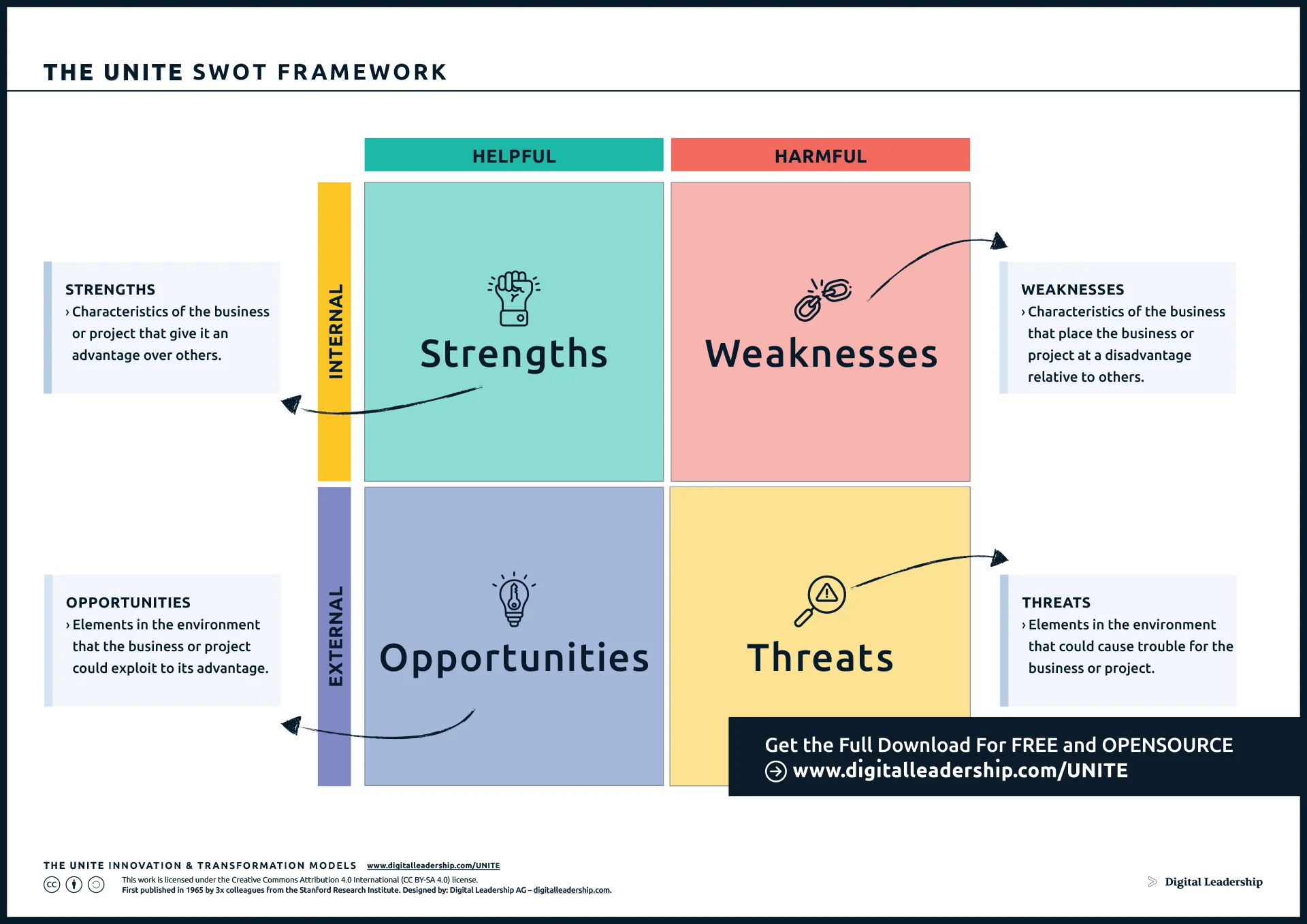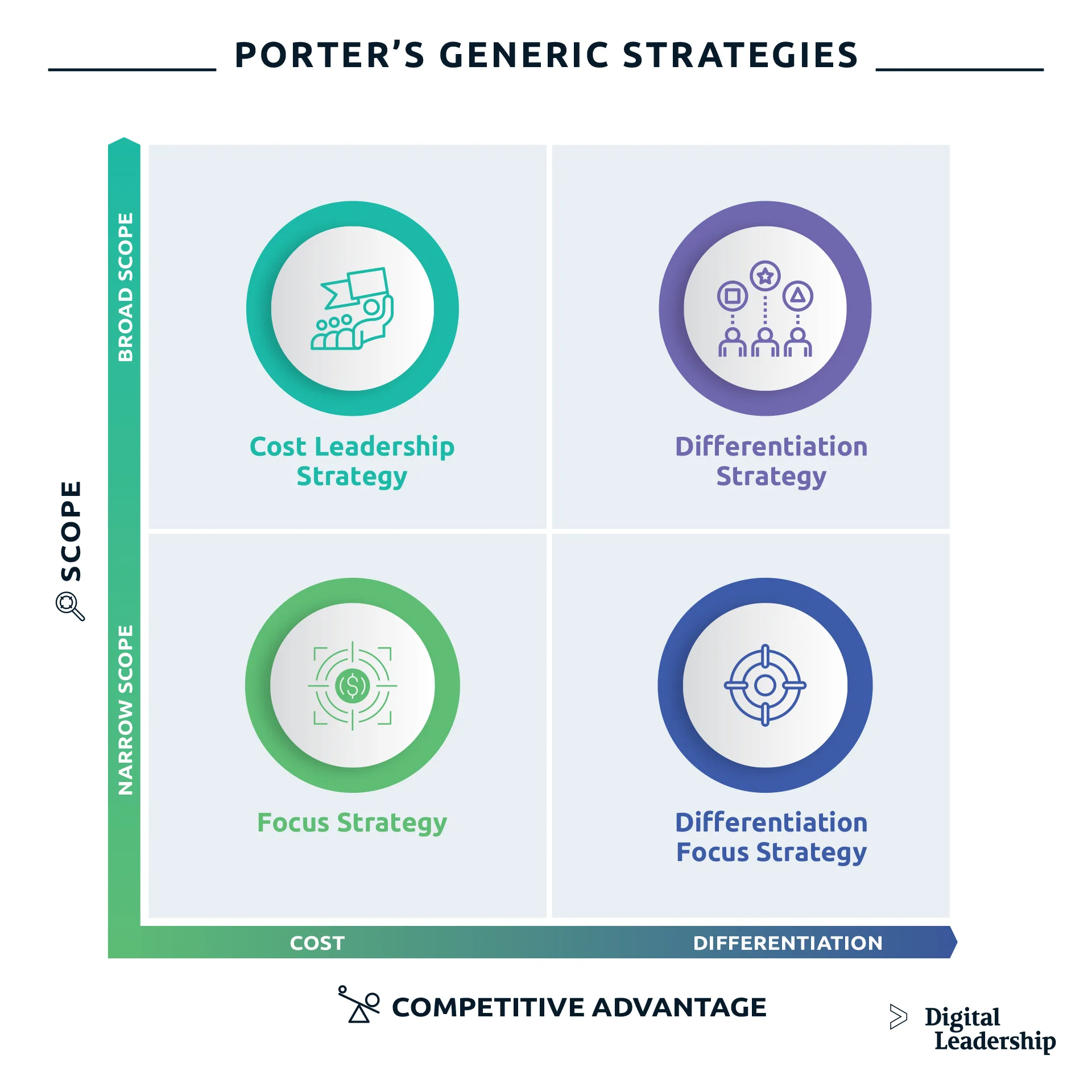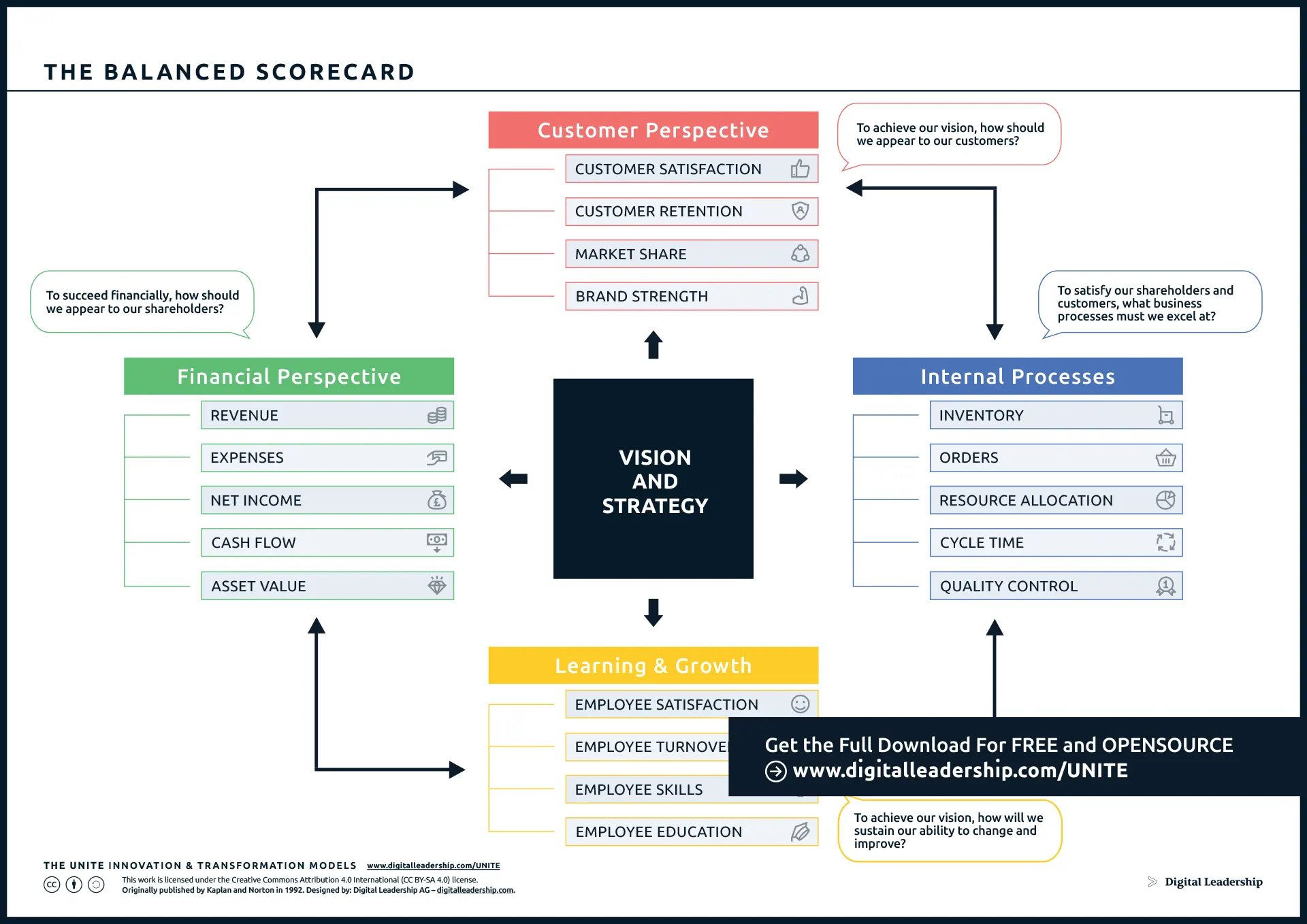Strategic Options: Techniques, Tips, and Tools for Business Success
Published: 08 March, 2023
Digital Strategy

Table of Contents
What separates a successful business from one that quickly shuts its doors for good? Is it luck? Available capital? Work ethic? Regulations (or lack thereof)?
While these factors certainly play a part in any business’s success, long-term success is more likely based on the organization’s ability to evolve over time to address the changing needs of its customers and the shifting circumstances of the business environment.
We’ve written a lot about the bridge between Business Strategy and Business Goals, and about the execution gap that often results in a company’s destruction. Having goals but not a course of action, or a set of activities with no united philosophy, results in a lot of flailing about, wasting resources while your competitors develop their own advantages.
We don’t want that to happen to you or your people.
In this article, we discuss the importance of developing Strategic Options—a set of plans to pivot to when needed but clearly planned so you can proceed without the panic that sometimes accompanies drastic changes. We believe having a set of strategies in place in advance, and then acting on them at the right time, is often the defining moment in a business’s existence. Success is determined by advanced strategy and the ability to make the necessary changes when the time is right.
What are Strategic Options? A Definition for Strategic Options
Strategic Options are the different courses of action that an organization can take to achieve its long-term goals and objectives. They should directly align with your Business Purpose. These options are typically evaluated by analyzing various factors, including the organization’s internal strengths and weaknesses, the external environment, market trends, and customer needs. As we’ll see, the tangible results of these Strategic Options can take many forms. That stresses how important it is for a business to make its own evaluations and build its options based on its situation.
Why is it Important to Develop Strategic Options? The Importance of Strategic Options
The development of Strategic Options should be an ongoing priority for any business that hopes to persist for years to come. Importantly, they can help organizations manage risk by diversifying a broad portfolio of initiatives. Organizations can reduce their exposure to risks associated with a single course of action. Additionally, since Strategic Options are developed in advance of an actual emergency or critical situation, you can take time and involve key stakeholders in the development. Bad decisions are made during a panic; planning avoids that risk. Let’s look at some other reasons why Strategic Planning is so important.
(1) Improved Innovation
Developing Strategic Options can encourage innovation within an organization. As organizations identify new and creative ways to achieve their strategic goals, rather than relying on traditional approaches, they can implement innovative solutions to existing and newly discovered problems.
(2) Better Decision Making
Of course, when you have more options available, you’re able to execute better decision-making. Articulating Strategic Options clearly helps guide a business and takes desperation out of the decision-making process.
(3) Increased Flexibility
Organizations that are flexible and adaptable in responding to changes in the external environment have a tremendous advantage over those that aren’t. By developing multiple options, organizations can pivot quickly and adjust their strategies to take advantage of emerging opportunities or to mitigate potential threats.
(4) Competitive Advantage
Through Strategic Options, organizations gain a competitive advantage by identifying unique and differentiated strategies. By exploring a range of options, organizations can identify new ways to differentiate themselves from their competitors and bring different sorts of value to their customers.
Strategic Options vs Strategic Goals vs Strategic Planning Process
While Strategic Options, Goals, and Planning are all similar and related—not to mention vital to an organization’s success—they are distinct from each other in important ways. Overall, Strategic Options are the different courses of action an organization can take to achieve its Strategic Goals, and the Strategic Planning Process is the method used to identify and select those options based on an analysis of the external and internal environment. Strategic Goals, then, are the desired outcomes that the organization wants to achieve through the implementation of its selected Strategic Options.
Related Articles:
- Strategic Planning Process: A Complete Guide
- Strategic Goals: Examples, Importance, Definitions and How to Set Them
Assessing Your Strategic Options
Assessing Strategic Options requires a systematic and analytical approach to evaluate the potential effectiveness of each option in achieving the organization’s strategic goals. At Digital Leadership, we rely on the Three Horizons of Growth and its associated approaches to help measure available Strategic Options.
We discuss these at length in How to Create Innovation, which you can find available on our website.
Let’s explore some of the ways you can evaluate your Strategic Options. As you’ll notice, many of these approaches are designed to give you an accurate, more complete view of your capabilities, your consumers, and the marketplace.
- Conduct a SWOT analysis: The first step in assessing Strategic Options is often to conduct a SWOT analysis. Through it, you identify the organization’s internal strengths and weaknesses, as well as potential external opportunities and threats.
- Evaluate market trends and customer needs: Evaluate customer needs to identify potential opportunities or areas of growth for the organization.
- Develop strategic options: Based on the SWOT analysis and market research, develop a range of Strategic Options that are aligned with the organization’s Strategic Goals. Solicit input from stakeholders throughout your organization to ensure a broad range of possible approaches.
- Evaluate each option: Evaluate each option against a set of criteria such as feasibility, profitability, risk, and alignment with the organization’s values and goals.
- Prioritize options: Prioritize the options based on their potential impact and feasibility and select the top options for continued development.
- Develop an action plan: For each selected option, develop how you’ll implement the plan, including timelines, resource allocation, and key performance indicators to measure success.
- Monitor and adjust: Once the plan is implemented, monitor progress regularly and adjust the strategy as needed based on changes in the internal or external environment.
Effective assessment of Strategic Options requires an analytical approach that considers the organization’s internal and external environment, market trends, customer needs, and Business Goals. The process should be ongoing. The organization should regularly evaluate and adjust its portfolio of Strategic Options based on changes in the business landscape.
The UNITE Strategic Options Matrix
Using the UNITE Strategic Options Matrix, we identify and evaluate a company’s Strategic Options.

Designed by: Digital Leadership AG – Based on the work of Chris Zook.
As part of the evaluation, we consider changes to the marketplace and how the company might adjust to these shifting conditions.
The Matrix facilitates exploring available Strategic Options, allowing businesses to gain a realistic view of their capabilities. The Options are also compared to one another and how they may or may not require moves away from the business’s core model and how attractive the options might appear to current and prospective customers.
The UNITE Assessment of Strategic Moves
The UNITE Assessment tracks the changes you make to your business operations across four potential moves: from small improvements through radical innovation. When we take more steps away from the current economic core of our organization, we incur more risk.

Designed by: Digital Leadership AG – Based on the work of Chris Zook.
Of course, with more risk comes the possibility for greater rewards. The Assessment is meant to ensure that we are fully aware of what we’re asking the business to weather: more risk, more investment, an increased number of unknown factors.
Fully armed with all the necessary information, we can soberly make the right moves given our specific situation.
Tools & Techniques For Developing Strategic Options
It’s not enough to just say that Strategic Options are important—we want to make sure you have the proper tools to develop your options and prepare their implementation.
We’ve mentioned some of these techniques in other articles, as well as already within this article, but it’s helpful to revisit them and offer a comprehensive list of the tools you have available when you’re preparing to develop your business’s Strategic Options.
(1) Conduct a SWOT Analysis
As we mentioned earlier, SWOT Analysis is a tool that can help businesses assess their internal and external environment by identifying the organization’s strengths, weaknesses, opportunities, and threats. Businesses then use their strengths to determine which Strategic Options align with their capabilities and offer the most potential for success.

First Published in 1965 by 3x colleagues from the Stanford Research Institue. Designed by: Digital Leadership AG
Weaknesses you identify might include operational inefficiencies or gaps in skills or resources, and opportunities could feature emerging market trends or customer needs that can be addressed through Strategic Options.
Additionally, SWOT Analysis can help businesses identify threats that may impact the organization’s operations. Businesses determine which Strategic Options may be the most resilient in the face of external pressures.
Another business tool that can be used to identify issues and evaluate strategic options is the TOWS matrix, which is an extension of the SWOT analysis. The TOWS matrix involves taking the results of the SWOT analysis and using them to create a matrix that maps out strategic options.
To use the TOWS matrix, you first identify the internal strengths and weaknesses and external opportunities and threats of your organization through a SWOT analysis. Then, you use these findings to create four categories: strengths-opportunities (SO), weaknesses-opportunities (WO), strengths-threats (ST), and weaknesses-threats (WT).
(2) Ansoff Matrix
The Ansoff Matrix can help businesses choose their Strategic Options by identifying potential growth strategies based on the organization’s current products and markets.

Originally developed by Igor Ansoff in 1957. Designed by: Digital Leadership AG
Through the Matrix, businesses evaluate Market Penetration, Market Development, Product Development, and opportunities for Diversification.
The Ansoff Matrix helps a business choose its Strategic Options by evaluating each option against factors such as market potential, resource requirements, and risk.
(3) Innovation Matrix
The Innovation Matrix helps businesses choose their Strategic Options by identifying potential innovation strategies based on the organization’s current products and markets. The Matrix organizes potential innovations into several categories:
- Sustaining Innovations
- Disruptive Innovations
- Efficiency Innovations
- Experiential Innovations
Again, the business will have to consider the results of their analysis and compare it against their overall Business Goals and strategic approach.
(4) Growth Matrix (BCG Matrix)
Through the BCG Matrix, businesses evaluate their product portfolio and identify potential growth strategies based on the position of each product in the market.

Originally published by Bruce Henderson in his essay The Product Portfolio, in 1970. Designed by: Digital Leadership AG
Ultimately, the BCG Matrix sorts each of the company’s products into one of four categories:
- Stars: products that have a high market share in a high-growth market
- Cash Cows: products that have a high market share in a low-growth market
- Question Marks: products that have a low market share in a high-growth market
- Dogs: Dogs are products that have a low market share in a low-growth market
The BCG Matrix helps a business develop its strategic options by evaluating its product portfolio and identifying potential growth strategies based on the position of each product in the market. By focusing its investment and resources on products with the highest potential for growth and profitability, businesses can optimize their Strategic Options and improve their overall performance.
(5) Explore Porter’s Generic Strategies
Porter’s Generic Strategies is a framework that outlines three general approaches to achieving a competitive advantage in a market: cost leadership, differentiation, and focus. These strategies can help a business develop its own Strategic Options by providing a framework for identifying and pursuing a competitive advantage in its market.

Porter’s approach is strongly dedicated to developing an unfair advantage, which is a somewhat aggressive stance to take when considering innovation, but one that has enormous potential if completed successfully.
(6) Balanced Scorecard
The Balanced Scorecard can help organizations assess their Strategic Options by measuring their performance against a set of key performance indicators (KPIs). The tool provides a framework for organizations to align their vision and strategy with their operational activities, and to measure progress towards achieving their goals.

Originally published by Kaplan and Norton in 1992. Designed by: Digital Leadership AG
There are four key perspectives of the Balanced Scorecard that organizations can use to assess their Strategic Options:
- Financial Perspective
- Customer Perspective
- Internal Process Perspective
- Learning and Growth Perspective
The Balanced Scorecard helps organizations prioritize their Strategic Options, ultimately aligning their strategic options with their operational activities, and by providing a framework for measuring progress towards their vision.
Strategic Options Examples
But what do Strategic Options look like, in practice, in the real world?
Obviously, their specific shape depends on all the evaluation and decision-making you’ve completed through your development processes.
It’s hard to categorize all possible routes for Business Strategy, but we’ve distilled some potential approaches into the shortlist that follows.
(1) Diversification
Diversification involves expanding a company’s operations into new products, markets, or industries. The goal of Diversification is to spread risk and create new revenue streams, thereby reducing the company’s dependence on its existing products or markets.
There are two main types of Diversification: related and unrelated. Related diversification involves expanding into businesses that are related to the company’s existing products, services, or customer base. For example, a company that produces and sells electronic devices might diversify into software development, which is related to its existing business.
Unrelated Diversification, on the other hand, involves expanding into businesses that are not related to the company’s existing products, services, or customer base. For example, a company that produces and sells electronic devices might diversify into the food and beverage industry, which is unrelated to its existing business.
(2) Innovation
As a Strategic Option, Innovation involves developing new products, services, processes, or business models to create a competitive advantage and drive growth. Innovation can help companies to stay ahead of the competition, respond to changing market conditions, and meet evolving customer needs.
To successfully implement Innovation as a Strategic Option, companies need to create a culture of innovation and invest in research and development. They also need to be able to identify and respond to changing market conditions and customer needs and be willing to take risks and embrace failure as part of the innovation process.
Innovation can be a powerful Strategic Option for businesses, but it also requires a long-term commitment and investment in resources. Companies that successfully innovate can create a sustainable competitive advantage and drive growth over the long term.
Of course, we believe our book How to Create Innovation is the definitive guide for driving new ideas and processes in the business world. Its models and approaches are available for free elsewhere on our website.
(3) Geographic Expansion
Geographic Expansion can be done in several ways: opening new physical locations, partnering with local businesses, or establishing online sales channels that reach new markets.
By expanding into new geographic markets, a company can diversify its revenue streams and reduce its dependence on any one market. This can help to mitigate the impact of local economic downturns or changes in consumer preferences.
Geographic expansion can also help a company to increase its market share by reaching new customers and competing against local businesses.
Companies must carefully evaluate the potential benefits and risks of Geographic Expansion before pursuing this Strategic Option. It requires careful planning and execution to ensure success in the new market.
(4) Cost Leadership
Through Cost Leadership, businesses aggressively reduce the cost of production or operation to offer products or services at a lower price than competitors. Businesses then gain a competitive advantage through cost efficiency and the ability to attract price-sensitive customers who are willing to sacrifice features or quality for a lower price.
Companies that achieve Cost Leadership can benefit from economies of scale, which allow them to produce or operate more efficiently as they grow. This can further reduce costs and increase profitability.
(5) Restructuring
Restructuring includes making significant changes to a company’s organizational structure, processes, or operations to improve its performance, efficiency, and profitability.
Through different Restructuring approaches—such as downsizing, reorganizing departments, or refocusing the company’s core business activities—a business can reduce costs and increase efficiency by eliminating redundant or non-core activities, consolidating operations, or streamlining processes. This can help to improve profitability and reduce financial strain.
However, restructuring can also have potential drawbacks, such as the risk of disrupting operations, reducing employee morale, or damaging relationships with customers or partners. Therefore, companies need to carefully plan and execute restructuring initiatives to minimize these risks and maximize the potential benefits.
(6) Partnerships & Alliances
Establishing new collaborative relationships can be a powerful Strategic Option. Joint ventures, strategic alliances, partnerships of various forms, these can all contribute to an ability to access new markets and technology, share risk, and increase competitiveness with businesses outside the partnership.
Companies need to carefully evaluate potential partners and establish clear communication and governance structures to minimize potential risks.
Closing Thoughts
Go into almost any building and you’ll find signs indicating escape routes in case of fire or other emergencies. It’s a strategic plan for leaving the building quickly and safely. It’s plotted well in advance of any danger starting, ready to go when the environment requires a change.
We wouldn’t expect fire escape routes to be established only once an actual fire breaks out, and we shouldn’t expect the development of Strategic Options to being only when the company is facing challenges.
Through planning, you can avoid the mistakes often associated with panic and pressure and make good decisions that boost the odds of your company’s success.

































 Book How to Create Innovation
Book How to Create Innovation